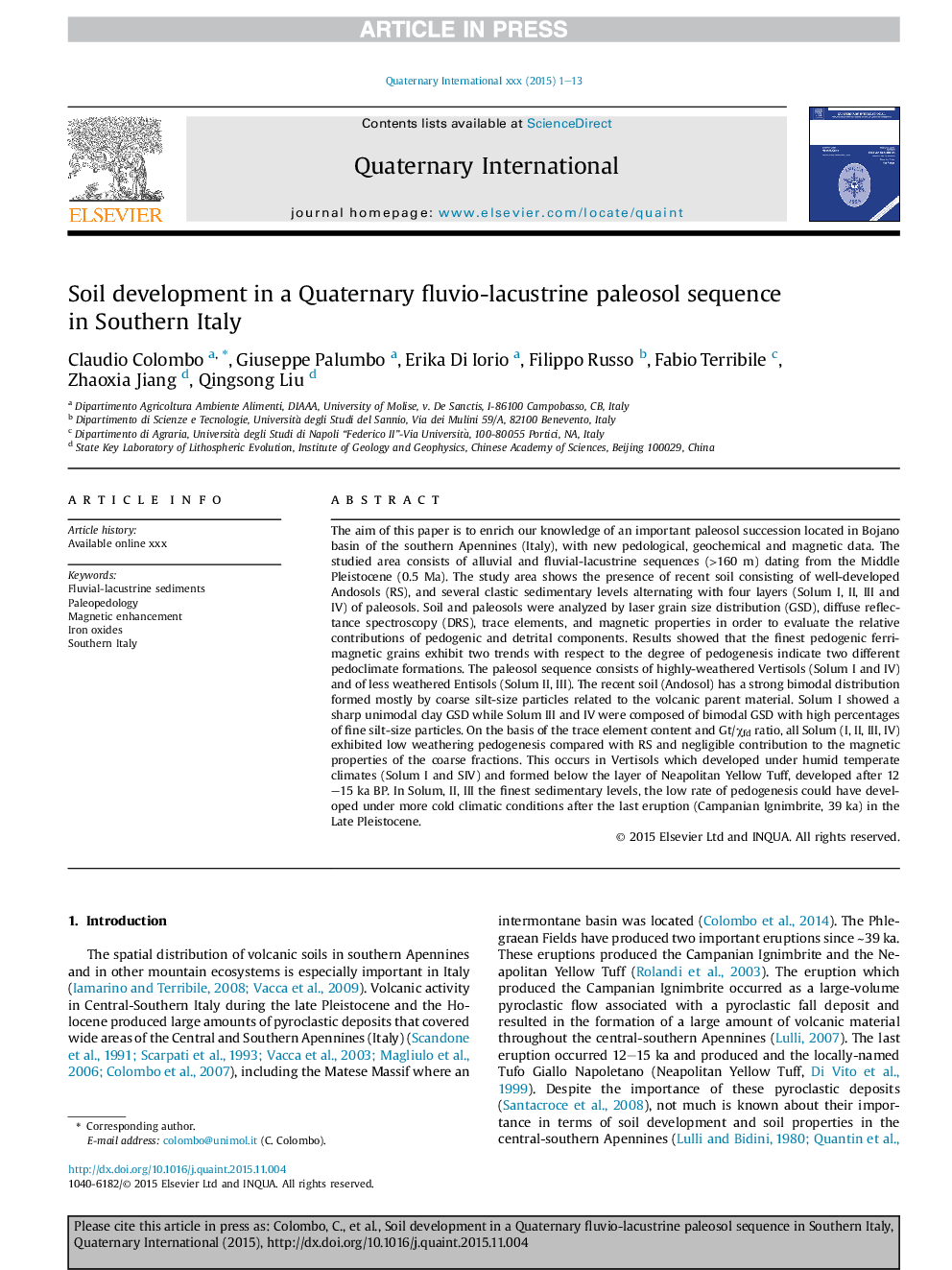| کد مقاله | کد نشریه | سال انتشار | مقاله انگلیسی | نسخه تمام متن |
|---|---|---|---|---|
| 5114052 | 1484089 | 2016 | 13 صفحه PDF | دانلود رایگان |
عنوان انگلیسی مقاله ISI
Soil development in a Quaternary fluvio-lacustrine paleosol sequence in Southern Italy
دانلود مقاله + سفارش ترجمه
دانلود مقاله ISI انگلیسی
رایگان برای ایرانیان
کلمات کلیدی
موضوعات مرتبط
مهندسی و علوم پایه
علوم زمین و سیارات
زمین شناسی
پیش نمایش صفحه اول مقاله

چکیده انگلیسی
The aim of this paper is to enrich our knowledge of an important paleosol succession located in Bojano basin of the southern Apennines (Italy), with new pedological, geochemical and magnetic data. The studied area consists of alluvial and fluvial-lacustrine sequences (>160 m) dating from the Middle Pleistocene (0.5 Ma). The study area shows the presence of recent soil consisting of well-developed Andosols (RS), and several clastic sedimentary levels alternating with four layers (Solum I, II, III and IV) of paleosols. Soil and paleosols were analyzed by laser grain size distribution (GSD), diffuse reflectance spectroscopy (DRS), trace elements, and magnetic properties in order to evaluate the relative contributions of pedogenic and detrital components. Results showed that the finest pedogenic ferrimagnetic grains exhibit two trends with respect to the degree of pedogenesis indicate two different pedoclimate formations. The paleosol sequence consists of highly-weathered Vertisols (Solum I and IV) and of less weathered Entisols (Solum II, III). The recent soil (Andosol) has a strong bimodal distribution formed mostly by coarse silt-size particles related to the volcanic parent material. Solum I showed a sharp unimodal clay GSD while Solum III and IV were composed of bimodal GSD with high percentages of fine silt-size particles. On the basis of the trace element content and Gt/Ïfd ratio, all Solum (I, II, III, IV) exhibited low weathering pedogenesis compared with RS and negligible contribution to the magnetic properties of the coarse fractions. This occurs in Vertisols which developed under humid temperate climates (Solum I and SIV) and formed below the layer of Neapolitan Yellow Tuff, developed after 12-15 ka BP. In Solum, II, III the finest sedimentary levels, the low rate of pedogenesis could have developed under more cold climatic conditions after the last eruption (Campanian Ignimbrite, 39 ka) in the Late Pleistocene.
ناشر
Database: Elsevier - ScienceDirect (ساینس دایرکت)
Journal: Quaternary International - Volume 418, 5 October 2016, Pages 195-207
Journal: Quaternary International - Volume 418, 5 October 2016, Pages 195-207
نویسندگان
Claudio Colombo, Giuseppe Palumbo, Erika Di Iorio, Filippo Russo, Fabio Terribile, Zhaoxia Jiang, Qingsong Liu,